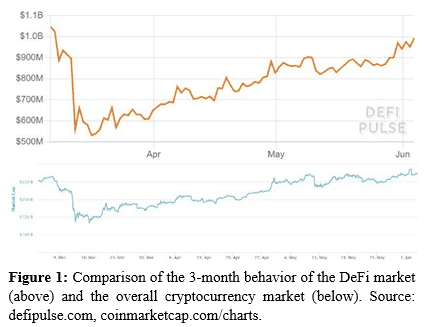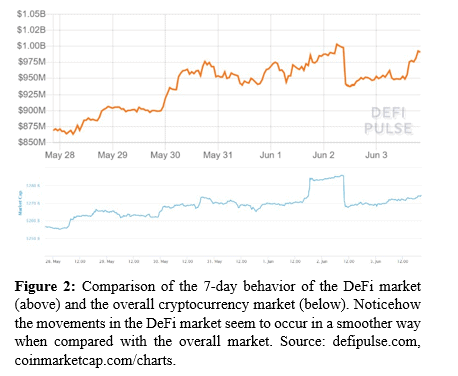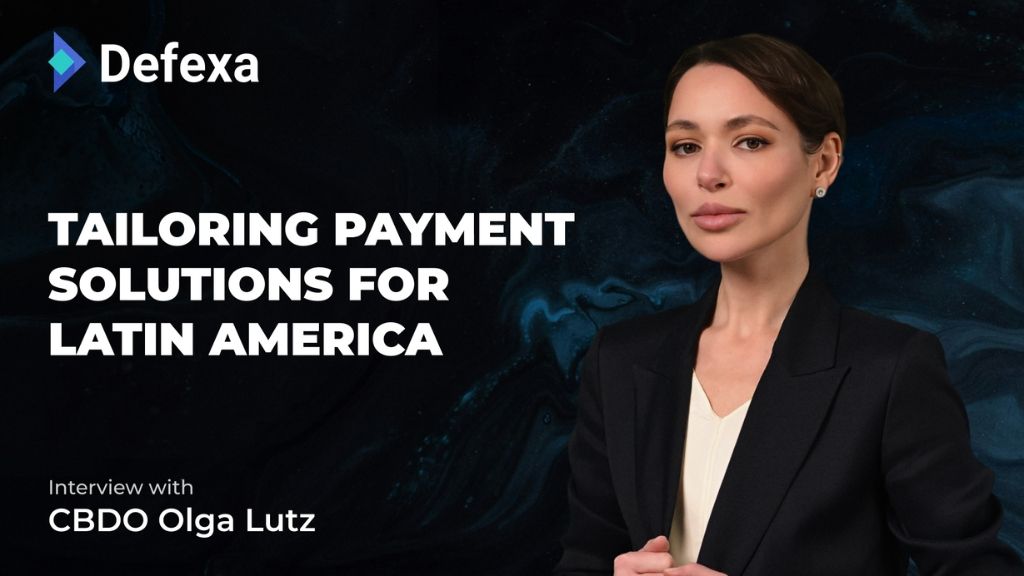Words by Gabriel Zanko, Tech Advisor, CEO of MobileyourLife (Investment Banking for Deep Technology and Renewable Energy), CEO of Urano Capital (the future Seed Fund for Deep Technology), researcher and speaker
Daniel Ramos, Gabriel Zanko, MobileyourLife – Bogotá, D.C., Colombia Proofreader: Isabel Rodríguez Barradas.
ABSTRACT
As digital assets become increasingly more popular, potential users look for projects and platforms that deviate the least from the environments in which they have survived and thrived for years. Decentralized Finance rises as a sector within the cryptocurrency market that implements blockchain systems to replicate and improve on the services currently offered by traditional markets, banks and financial organizations.
INTRODUCTION
For the last few years, the popularization of digital assets and the widespread of their use have been some of the most discussed topics within the technology social sphere.
In the past decade, we saw cryptocurrency become a term in everyone’s mouth, thanks to the rise of Bitcoin in 2017 and the subsequent crash of 20181. But the most important takeaway of these events is the positive effect it had on blockchain as a whole, with some of the largest companies in the world showing interest in implementing this technology2, especially for the process of asset digitization and tokenization.
Another of the most relevant uses of this technology is in the development of decentralized platforms that offer financial services similar to those of banks and similar organizations to their users. This sector of the market has grown to be called Decentralized Finance (DeFi, from this point on), and has become more popular since more projects have aroused to satisfy the needs of the great variety of cryptocurrency users and enthusiasts.
In this document we will review the most important aspects of the DeFi market, along with its recent history, some important types of projects and the current and future states of this sector, along with how it reacts to the movements of the cryptocurrency landscape.
BACKGROUND
Decentralized Finance as a concept dates back to the early days of Ethereum, since the ability to create smart contracts gave liberty to those most knowledgeable in finances to start launching platforms that offered the definition of agreements beyond the P2P payments supported by Bitcoin.
These contracts are similar in nature to a simple cryptocurrency transaction, in the sense that they are distributed and replicated into a network of trustless nodes, without the need of any authority to enforce them, and that only become effective once the conditions established when it was created are met3. This, along with them being programmed in the Ethereum Network, allows for users to not only create exclusive tokens for their platforms, but also create a wide range of conditions available for their contracts.
Given how the vast majority of the population is familiar with how traditional banking services work, DeFi projects are born to replicate this models aiming to attract the attention of potential users and enthusiasts that might feel discouraged due to the uniqueness and volatility of the cryptocurrency market, and it is now a large sector of the overall market that covers projects focused on lending, derivatives, asset management and other activities.
CURRENT STATE
 At the time of writing, the DeFi market is worth nearly $1 billion in Total Value Locked (TVL, from this point on), which is a metric used specifically for this analysis since it includes not only the market value of the total tokens of each project, but also the amount that is currently being handled in the contracts of every project and multiplying for the value in U.S. dollars of every token.
At the time of writing, the DeFi market is worth nearly $1 billion in Total Value Locked (TVL, from this point on), which is a metric used specifically for this analysis since it includes not only the market value of the total tokens of each project, but also the amount that is currently being handled in the contracts of every project and multiplying for the value in U.S. dollars of every token.
Below we can see the movement of the DeFi market TVL in the past three months compared to the overall cryptocurrency market (Figure 1). The similarities are obvious, since the tokens that hold value in the DeFi market still behave as normal cryptocurrencies.
 However, when looking at smaller time intervals, the main difference becomes noticeable (Figure 2). Since most of the TVL is held in contracts that release their values a certain time after a condition is met, the DeFi sector tends to take longer to react to certain movements.
However, when looking at smaller time intervals, the main difference becomes noticeable (Figure 2). Since most of the TVL is held in contracts that release their values a certain time after a condition is met, the DeFi sector tends to take longer to react to certain movements.
This phenomenon has an effect in both directions, as increases and decreases appear taking a little longer to be noticeable. This gives the DeFi market an additional edge of stability over the entire cryptocurrency market, which acts as an encouraging factor for potential users along with the diversity of services they offer to their users.
LENDING AND BORROWING
The most popular service and the one that represents the largest fraction of the market is made up of the platforms and projects that offer ways to lend or borrow funds made up of a wide variety of assets.
These projects give the users multiple ways of generating revenue, mostly by the interests generated by their lends or by collateral generated by how much of a resource they have deposited in the pool. On the other end, borrowers have a limit to the amounts they can request based on diverse factors: accumulated collateral, deposited funds or even community ratings are all data that can be entirely managed by blockchain, taking advantage of the security associated with the network.
Because of how popular the lending model is, the projects that fall in this group are much more popular than the other categories, with Maker representing over 53% of the DeFi market4, with a TVL of nearly $540 million dollars. It also has the benefit of being a model that encourages trading instead of holding (Maker’s locked supply is below 2% of the total supply), which maintains a healthy hash rate for their respective blockchains.
ASSET DIGITIZATION AND MANAGEMENT
Another way to attract the attention of potential users is to offer them a way to gain the benefits of blockchain while handling the assets they already own. This not only reduces the volatility to a minimum, since the value of each token is tethered to the real-life asset with which it is associated, but also allows for decentralized trading without any intermediaries or third parties6.
Passive revenue generation is not the main focus of these projects, but they rather focus on giving liberties to traders and allow them to access a wider market. Each transaction performed through them is charged with a transaction fee, which is then distributed among the users that hold the platform’s token (security tokens). In other models, the platform token allows for discount in transaction fees.
Synthetix, an Australia-based platform, allows users to create and trade Synths, virtual synthetic assets that track the value of the real-world asset they represent. At the time of writing, they support over 30 assets including major cryptocurrencies, fiat currencies, and commodities like gold and even stocks. Since this wide variety of assets is immediately available for each user within the platform, it gives them an easy way to diversify their investments and generate income from a single hub.
DERIVATIVES AND FUTURES
Despite the time-sensitive nature of cryptocurrency, where the price of an asset can show immense variation in the span of a few hours, the derivatives market has found its way to gather popularity and momentum, mostly thanks to the rise of futures.
The futures market is based around the creation of contracts that establish agreements to buy or sell an asset at a certain price at a determined time in the future between two parties that do not know each other6. When this concept is combined with the freedom that Ethereum offers to create conditions for smart contracts makes cryptocurrency a field with incredible potential. Just in Q1 2020, it was reported that over $2 trillion was traded in cryptocurrency futures7, mainly trading Bitcoin, continuing the trend that had been established since a year before (excluding a slight decline in Q4 2019).
With conditions for sale ranging from time to absolute price, including percentage of change and even indicators related to the trading volume, the derivatives market opens the gate for those keen on speculating to go a step further, as they try to predict the behavior of such volatile assets in the long term.
OTHER SERVICES
Besides the mentioned sectors, the DeFi market also includes projects focused towards the establishment of solid and fast payment networks that aim to compete with traditional giants like MasterCard or Visa, or big names in the field of electronic payments like PayPal, all while taking full advantage of the security created by blockchain.
Decentralized exchanges are also included in this list of projects. Much like trading a cryptocurrency directly, using these exchanges makes it so every transaction is replicated in the blockchain. However, as centralized exchanges, these platforms allow for a vast amount of trading opportunities; including fiat-to-crypto purchase and sale, and crypto-to-crypto conversions, while remaining a trustless system.
FORSEEABLE FUTURE
To understand where DeFi as a whole is going, we must also analyze its current state and its historical relation to the overall cryptocurrency market.
This document was redacted a few weeks after Bitcoin’s third halving, which is hauled by the majority of experts and enthusiasts as the starting point of a long- term bullish tendency that may last for over a year8. If the relation between DeFi and the overall market remains stable, any positive trend would translate into growth, with the derivatives market gaining on lending due to the evidence that supports long term growth, which motivates users to create futures contracts that cover such scenarios.
Along with the imminent popularization of digital assets, these factors might be enough for those looking for ways to diversify their portfolio to enter the world of DeFi, giving it enough momentum to become a major force in the eyes of the world.
REFERENCES
1. Fry, John. (2018). “Booms, busts and heavy-tails: The story of Bitcoin and cryptocurrency markets?” Economics Letters, 171, 225-229.
2. De Castillo, Michael (2019). “Blockchain 50: Billion Dollar Babies”. Forbes. Retrieved from: https://www.forbes.com/sites/michaeldelcastillo/20 19/04/16/blockchain-50-billion-dollar- babies/#610a1df57cc
3. Bartoletti, M., & Pompianu, L. (2017, April). “An empirical analysis of smart contracts: platforms, applications, and design patterns”. In International conference on financial cryptography and data security (pp. 494-509). Springer, Cham.
4. Data retrieved from https://defipulse.com/ on 04/Jun/2020.
5. Guo, Y., & Liang, C. (2016). “Blockchain application and outlook in the banking industry”. Financial Innovation, 2(1), 24.
6. Heckinger, R. (2013) “Understanding Derivatives: Markets and Infrastructure. Chapter 1: Derivatives Overview”. Federal Reserve Bank of Chicago.
7. Retrieved from https://news.bitcoin.com/trillion- traded-cryptocurrency-spot-futures-markets/.
8. Retrieved from https://news.bitcoin.com/bull-may- not-come-bitcoin-halving-bitmains-jihan-wu/
SiGMA Calendar:
SiGMA Americas and AIBC Digital Summit were launched with great success in the past week, pushing the shifting grounds of the gaming industry towards LatAm and discussing the current developments in digitalisation. In a first for SiGMA, both the gaming and the tech segments of the conference were offered in 3 languages, English, Spanish and Portuguese.
SiGMA will launch its next series of events in 2021, with SiGMA Europe headlining next year’s calendar. Inaugural summits in Asia and Americas are also set to dominate the year, with SiGMA Asia launching in May 2021 and SiGMA Africa in 2022! Explore the full agenda here and register now!















